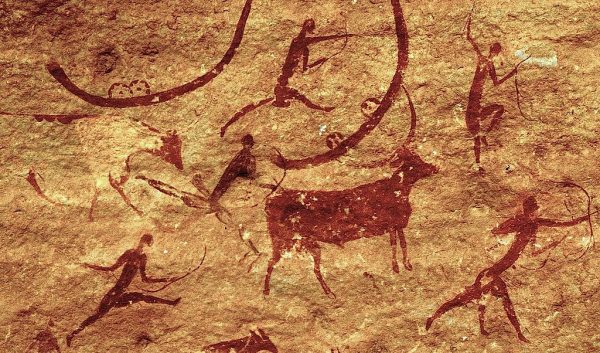
Archaeology
- • 100%Featured
💎 Diamond Archaeology: Open venues for publishing, reviewing and curating archaeological research
diamond.open-archaeo.info 💎 Diamond ArchaeologyOpen venues for publishing, reviewing and curating archaeological research
- • 100%apnews.com Archaeologists unearth an ancient Middle Kingdom Egyptian tomb in Luxor
Egyptian authorities say archeologists from Egypt and the United States unearthed an ancient tomb with 11 sealed burials near the famed city of Luxor.

- • 100%www.bloomberg.com Brazil’s Farming Boom Is Erasing an Ancient Amazonian Civilization
An underfunded agency is up against the agriculture industry’s unstoppable expansion of cash crops — and humanity’s heritage hangs in the balance.

- • 100%edition.cnn.com Huge number of witches’ marks found at Tudor house in ‘astonishing’ discovery | CNN
A “staggering array” of witches’ marks have been discovered on the walls of a Tudor property in England.
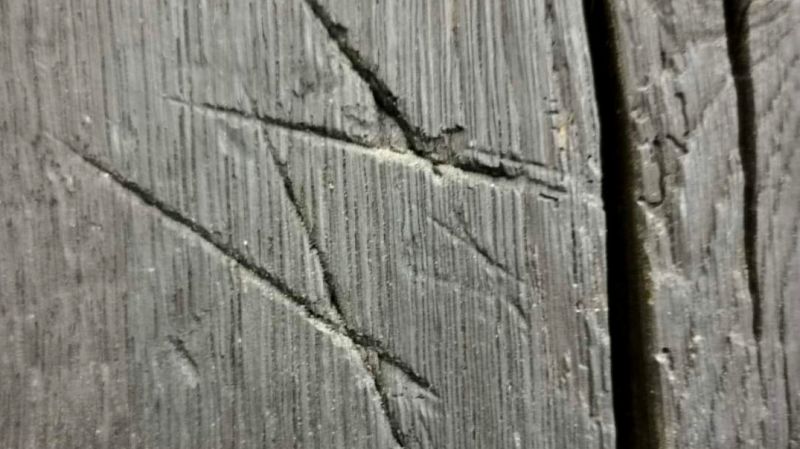
- • 100%phys.org 'Well-man' thrown from castle identified from 800-year-old Norse saga
A passage in the Norse "Sverris Saga," the 800-year-old story of King Sverre Sigurdsson, describes a military raid that occurred in AD 1197, during which a body was thrown into a well at Sverresborg Castle, outside Trondheim in central Norway, likely as an attempt to poison the main water source for...

- www.sapiens.org Unraveling a “Ghost” Neanderthal Lineage
Remains in France found by archaeologists and geneticists suggest at least two lineages—not just one—of late Neanderthals in Europe.

Remains in France found by archaeologists and geneticists suggest at least two lineages—not just one—of late Neanderthals in Europe.
- • 100%murphystoastgames.itch.io A.R.I. Archaeological Research Initiative by Murphy's Toast Games
Solve past misteries using archaeology and deduction
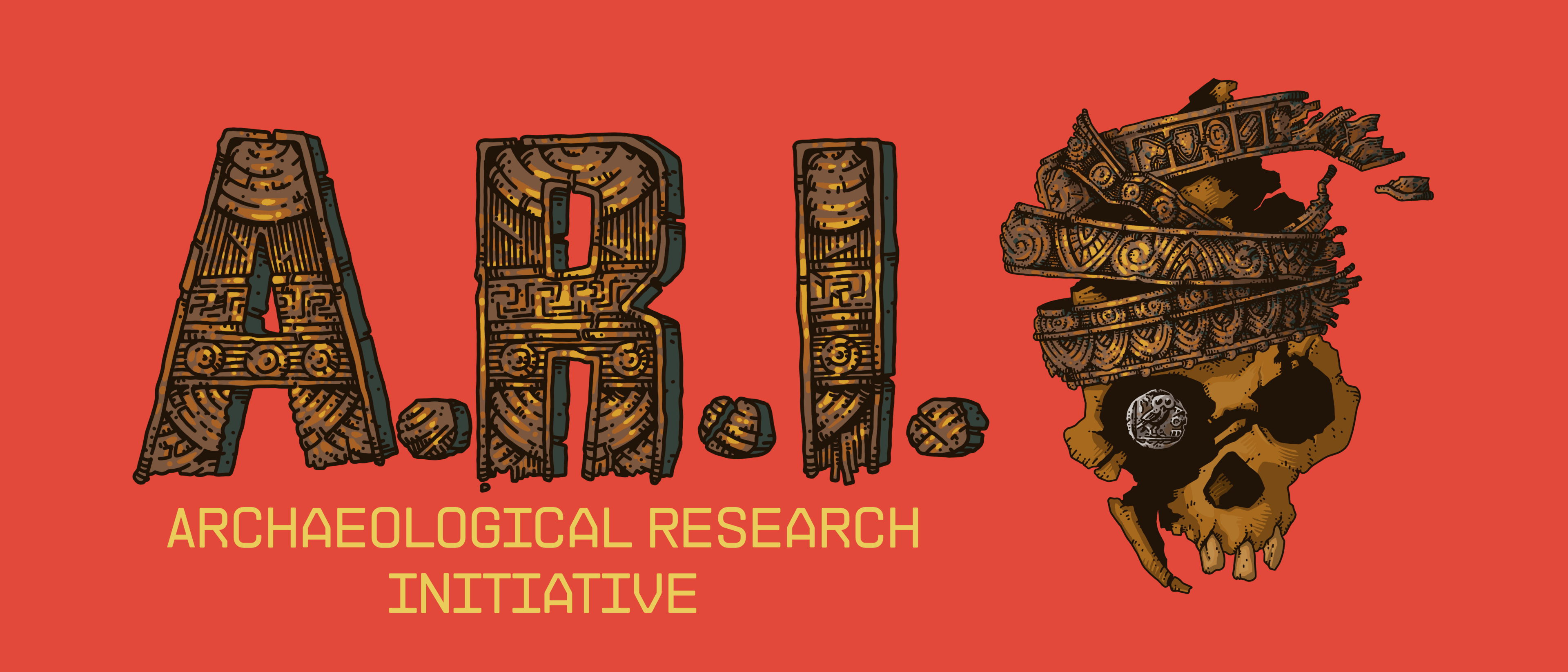
- • 100%phys.org Underwater caves yield clues that may help explain early expansion of Homo sapiens into Mediterranean islands
Archaeological surveys led by scientists at Washington University in St. Louis suggest that coastal and underwater cave sites in southern Sicily contain important new clues about the path and fate of early human migrants to the island.

- • 93%www.theguardian.com British history is being destroyed before our eyes – and it has nothing to do with culture wars over statues | John Harris
Brutal cuts to council budgets have decimated museums and forced some to close. We’re at risk of losing our shared memory, writes Guardian columnist John Harris

- • 98%www.livescience.com Ancient DNA from South Africa rock shelter reveals the same human population stayed there for 9,000 years
Ancient human genomes reconstructed from remains at a southern African rock shelter show remarkable genetic continuity over time.

- • 100%www.livescience.com Medieval walrus ivory may reveal trade between Norse and Indigenous Americans hundreds of years before Columbus, study finds
The Thule Inuit people and Norse both hunted walrus in the High Arctic in the 13th century, according to a new study.

- • 100%www.smithsonianmag.com Divers in Mexico's Underwater Caves Get a Glimpse of Rarely Seen Artifacts, Fossils and Human Remains
Cenotes in the Yucatán Peninsula are time capsules preserving remnants of Maya culture and fossils of extinct megafauna
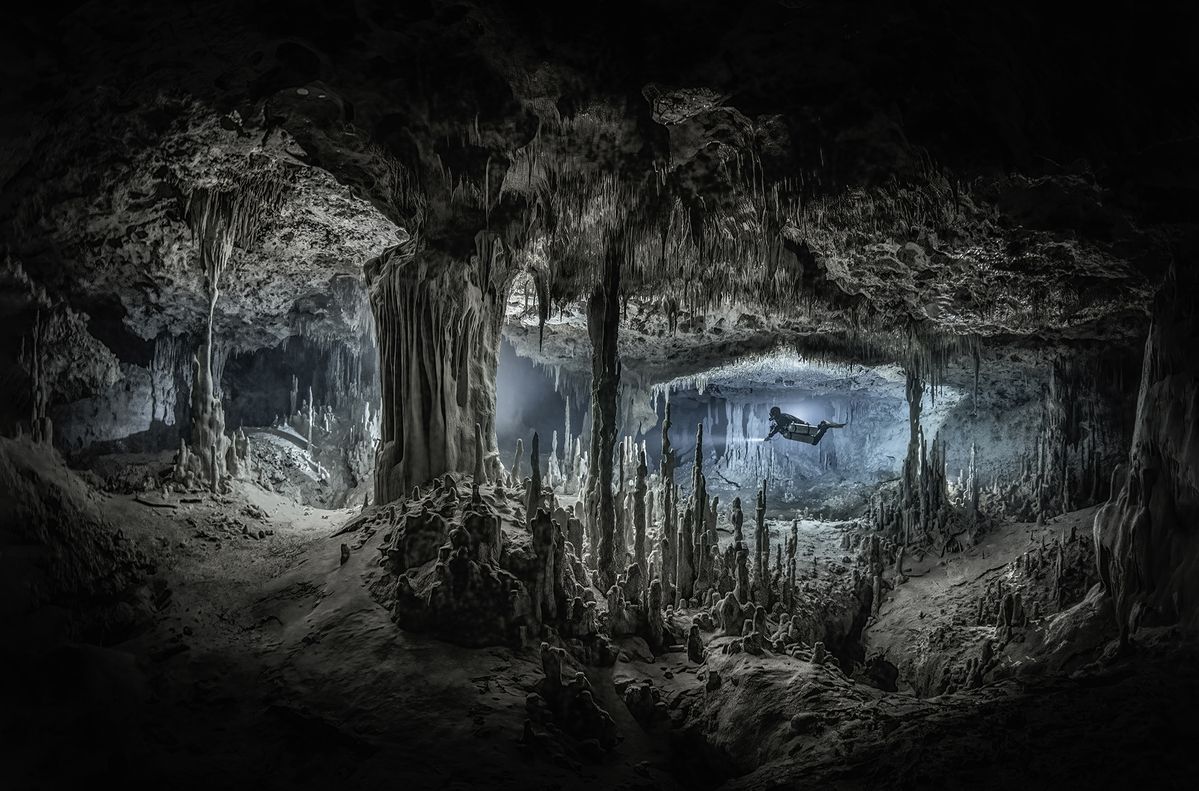
- • 100%www.ucl.ac.uk The Dawn of Everything inspiration for Megalopolis film
The Dawn of Everything, co-authored by David Wengrow (UCL Institute of Archaeology), has been named as one of the inspirations for Francis Ford Coppola's new film.

- arstechnica.com Franklin expedition captain who died in 1848 was cannibalized by survivors
Scientists matched DNA of living descendent to Capt. James Fitzjames of the HMS Erebus.

Scientists at the University of Waterloo have identified one of the doomed crew members of Captain Sir John S. Franklin's 1846 Arctic expedition to cross the Northwest Passage. According to a recent paper published in the Journal of Archaeological Science, DNA analysis revealed that a tooth recovered from a mandible at one of the relevant archaeological sites was that of Captain James Fitzjames of the HMS Erebus. His remains show clear signs of cannibalism, confirming early Inuit reports of desperate crew members resorting to eating their dead.
"Concrete evidence of James Fitzjames as the first identified victim of cannibalism lifts the veil of anonymity that for 170 years spared the families of individual members of the 1845 Franklin expedition from the horrific reality of what might have befallen the body of their ancestor," the authors wrote in their paper. "But it also shows that neither rank nor status was the governing principle in the final desperate days of the expedition as they strove to save themselves."
- • 100%www.livescience.com 50 Viking Age burials discovered in Denmark, including a woman in a rare 'Viking wagon'
Finding a Viking Age burial ground of this size is rare, in part because Scandinavian soil doesn't preserve skeletons well.

- • 100%www.theguardian.com Archaeologists use AI to discover 303 unknown geoglyphs near Nazca Lines
Newly discovered figures dating back to 200BCE nearly double the number of known geoglyphs at enigmatic site

The use of AI combined with low-flying drones revolutionised the speed and rate at which the geoglyphs were discovered, according to a research paper published this week in the Proceedings of the National Academy of Sciences (PNAS).
The paper said while it “took nearly a century to discover a total of 430 figurative Nazca geoglyphs”, using an AI system covering the entire Nazca region it “took just six months to discover 303 new figurative geoglyphs”.
- https:// www.cbc.ca /radio/unreserved/indigenous-led-archaeology-1.6854258
cross-posted from: https://hexbear.net/post/3519681
> >"It was different because there wasn't a lot of education [about] our people," she said. "So I only learned my history through my family members." > > >Years later, Tenasco is learning much more about her culture and her ancestors at a different kind of school — a federally-funded Indigenous archeological field school called Anishinabe Odjibikan. > > >The school brings together young members of the Algonquin communities of Kitigan Zibi in Quebec and Pikwakanagan in Ontario to dig up, clean and sort items used by their ancestors thousands of years ago. > > >Tenasco and her fellow Anishinabe Odjibikan participants learn how to document layers of earth and rocks, identify materials and determine if they're local to the area, use surveyor's tools and clean and reassemble pottery pieces found at a dig site. > > >Anishinabe Odjibikan is part of a growing trend in archaeology of involving the Indigenous peoples whose lands are being excavated — with the work either being led by Indigenous people, done collaboratively or carried out with their consent. > > >According to Cree/Métis archaeologist Paulette Steeves, the last century of archaeology has invalidated the pre-contact history of the Americas — and the people who lived there for thousands of years. > > Full Article
- phys.org Researchers document Russian destruction of Ukrainian archaeological sites
As Russian missile strikes and heavy assaults by ground troops pace deadly attacks on Ukraine, a new report by University of Virginia researchers reveals another destructive facet of Russia's invasion.
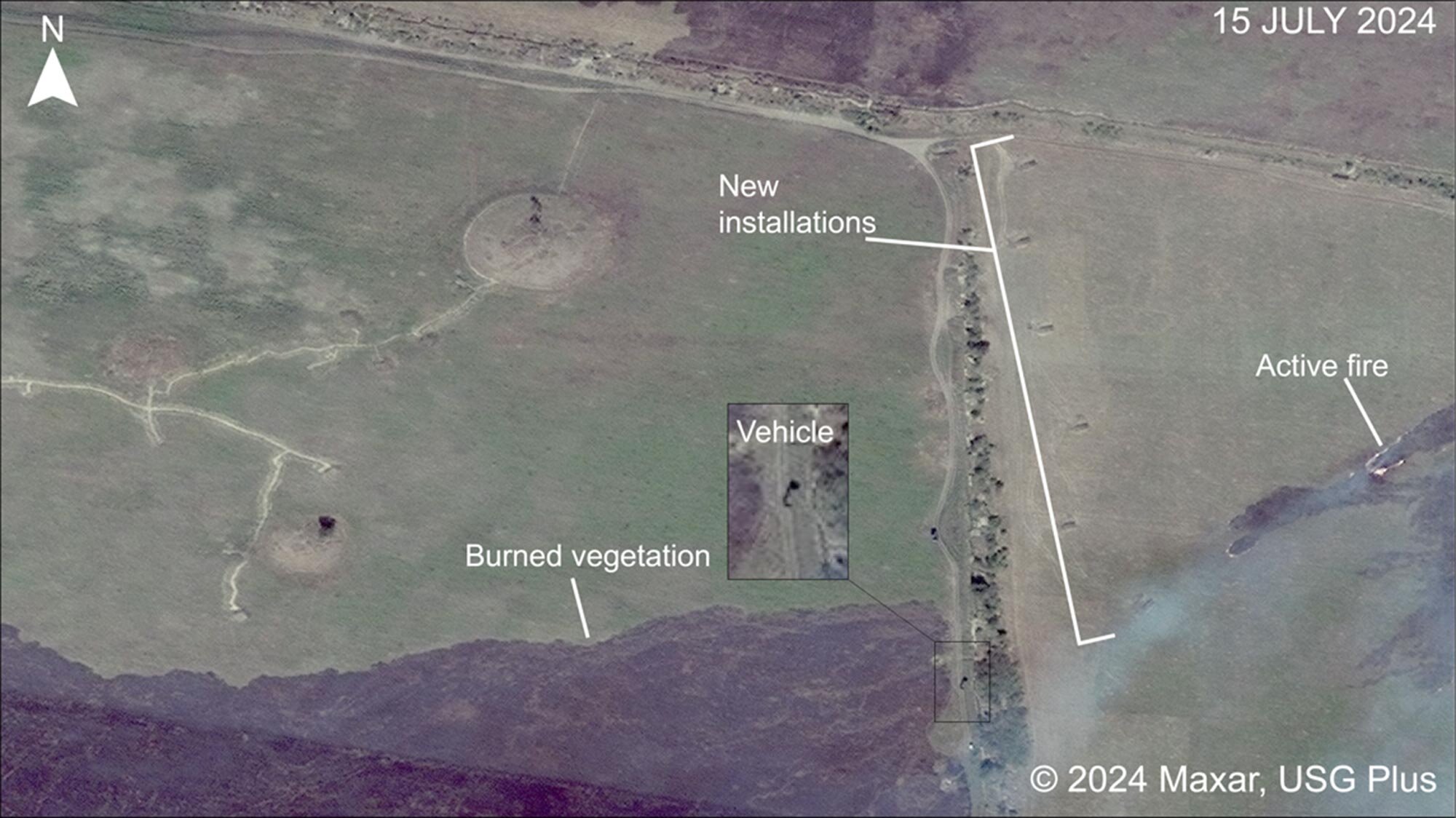
As Russian missile strikes and heavy assaults by ground troops pace deadly attacks on Ukraine, a new report by University of Virginia researchers reveals another destructive facet of Russia's invasion.
Using commercial satellite imagery and other open-source information, associate professor of sociology Fiona Greenland and other researchers with UVA's Cultural Resilience Informatics and Analysis, or CURIA, Lab determined that multiple ancient Ukrainian burial mounds have been damaged in two locations currently occupied by Russian troops—a potential violation of international law.
These historically significant burial sites, called "kurgans," were constructed by the ancient peoples of the Ukrainian steppe. The mounds, up to 65 feet tall, contain human remains and artifacts dating back as far as 3000 B.C.E.
- www.bbc.com French dig team gets 200-year-old note from archaeologist
A team of volunteer archaeologists in Normandy has had a surprise communication from the past.

A team of student volunteers on an archaeological dig in northern France has had a surprise communication from the past.
- • 100%www.atlasobscura.com The First Horse Domestication Was Later Than We Thought
Where and when did horses become our helpers? Science has some new and surprising answers.

- • 98%arstechnica.com Old Easter Island genomes show no sign of a population collapse
Native American DNA in the genomes dates to roughly when Rapa Nui was settled.
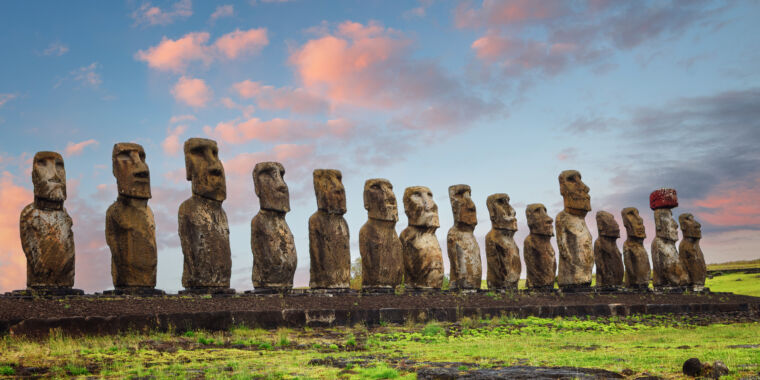
Every day, my distaste for Jared Diamond ages like a fine wine.
- phys.org Clovis people used Great Lakes camp annually about 13,000 years ago, researchers confirm
The earliest humans to settle the Great Lakes region likely returned to a campsite in southwest Michigan for several years in a row, according to a University of Michigan study.

The earliest humans to settle the Great Lakes region likely returned to a campsite in southwest Michigan for several years in a row, according to a University of Michigan study.
Until recently, there was no evidence that people from the Clovis period had settled the Great Lakes region. The Clovis people appeared in North America about 13,000 years ago, during the geologic epoch called the Pleistocene. During the Pleistocene, sheets of glaciers covered much of the world, including Michigan, making the land inhospitable for human settlers. But a 2021 U-M study confirmed that Clovis people built a camp, now called the Belson site, in southwest Michigan.
- www.livescience.com 'Sensational discovery' of 2,000-year-old Roman military camp found hidden in the Swiss Alps
Researchers used lasers to find the Roman military camp, which was "strategically" located overlooking a battleground.
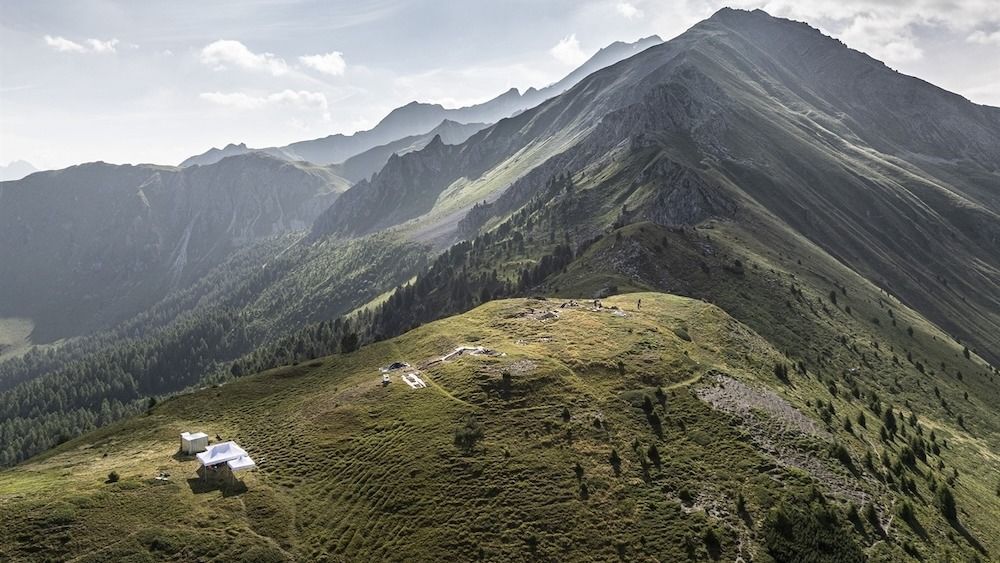
- • 100%journals.plos.org Analysis of Greek prehistoric combat in full body armour based on physiological principles: A series of studies using thematic analysis, human experiments, and numerical simulations
One of the oldest complete suits of European armour was discovered in 1960 near the village of Dendra, in Southern Greece, but it remained unknown whether this armour was suitable for extended use in battle or was purely ceremonial. This had limited our understanding of the ancient Greek–Late Bronze...

- www.livescience.com Bison Licking Insect Bite: A 14,000-year-old lifelike figure carved from a weapon
The small carving was made 14,000 years ago by a group of hunters.

This prehistoric carving, discovered inside a cave in France, depicts a steppe wisent (Bison priscus), a now-extinct species of bison. It was crafted from a piece of reindeer antler that was previously used as a spear thrower for hunting, according to the Bradshaw Foundation.
Despite its small size — roughly 4 inches (10.5 centimeters) wide — the figurine contains a wealth of meticulous details, including finely carved individual hairs across the animal's body and a pair of horns jutting from its head, giving the piece a lifelike quality.
- www.nature.com Stone Age builders had engineering savvy, finds study of 6000-year-old monument
A survey of the Dolmen of Menga suggests that the stone tomb’s Neolithic builders had an understanding of science.

The Neolithic farmers and herders who built a massive stone chamber in southern Spain nearly 6,000 years ago possessed a good rudimentary grasp of physics, geometry, geology and architectural principles, finds a detailed study of the site.
Using data from a high-resolution laser scan, as well as unpublished photos and diagrams from earlier excavations, archaeologists pieced together a probable construction process for the monument known as the Dolmen of Menga. Their findings, published on 23 August in Science Advances1, reveal new insights into the structure and its Neolithic builders’ technical abilities.
- l.smartnews.com Archaeologists find 4281-foot-long secret tunnel beneath ancient Egyptian temple (Good)
Archaeologists find 4281-foot-long secret tunnel beneath ancient Egyptian temple For more than two de...

- phys.org To kill mammoths in the Ice Age, people used planted pikes, not throwing spears, researchers say
How did early humans use sharpened rocks to bring down megafauna 13,000 years ago? Did they throw spears tipped with carefully crafted, razor-sharp rocks called Clovis points? Did they surround and jab mammoths and mastodons? Or did they scavenge wounded animals, using Clovis points as a versatile t...

How did early humans use sharpened rocks to bring down megafauna 13,000 years ago? Did they throw spears tipped with carefully crafted, razor-sharp rocks called Clovis points? Did they surround and jab mammoths and mastodons? Or did they scavenge wounded animals, using Clovis points as a versatile tool to harvest meat and bones for food and supplies?
UC Berkeley archaeologists say the answer might be none of the above.
Instead, researchers say humans may have braced the butt of their pointed spears against the ground and angled the weapon upward in a way that would impale a charging animal. The force would have driven the spear deeper into the predator's body, unleashing a more damaging blow than even the strongest prehistoric hunters would have been capable of on their own.
- phys.org Ice Age Europeans: Climate change caused a drastic decline in hunter–gatherers, fossil study shows
A large-scale study of fossil human teeth from Ice Age Europe shows that climate change significantly influenced the demography of prehistoric humans.

A large-scale study of fossil human teeth from Ice Age Europe shows that climate change significantly influenced the demography of prehistoric humans.
Using the largest dataset of human fossils from Ice Age Europe to date, an international research team shows how prehistoric hunter–gatherers coped with climate change in the period between 47,000 and 7,000 years ago.
Population sizes declined sharply during the coldest period, and in the West, Ice Age Europeans even faced extinction, according to the study published August 16 in the journal Science Advances.
- www.livescience.com When did humans start cooking food?
When did humans first roast food over a fire? Archaeology and biology can shed light on this mystery.

Cooking is important — in fact, some researchers believe it's what allowed our human ancestors to unlock the extra calories needed to grow larger brains. So when was cooking invented?
The timing is uncertain, but evidence suggests people were cooking food at least 50,000 years ago and as early as 2 million years ago. This evidence comes from two fields: archaeology and biology.
One piece of archaeological evidence for cooking is cooked starch grains found in dental calculus, or hardened dental plaque. "People can find it in teeth that are 50,000 years old," said Richard Wrangham, a retired professor of biological anthropology at Harvard University and the author of "Catching Fire: How Cooking Made Us Human" (Basic Books, 2009).
But earlier than that, the evidence is less clear. Generally, scientists look for evidence that people were controlling fire. But evidence of controlled fire isn't necessarily evidence of cooking; — people could have used that fire for heat or to make tools, for example.
- www.sciencedaily.com Impact of 700 years of Inuvialuit subsistence hunting on beluga whales
An international team of researchers analyzed beluga whale bones retrieved from archaeological sites in the Mackenzie Delta, Northwest Territories, Canada, to shed light on the sustainability of centuries of Inuvialuit beluga whale subsistence harvests.

'Since Inuvialuit ancestors arrived in the Mackenzie Delta around 800 years ago, beluga whales have been central to their livelihood and culture,' said archaeologist and co-senior author Professor Max Friesen from University of Toronto.
'However, little is known of the impact of centuries of sustained subsistence harvests on the beluga population'.
Integrating paleogenomics, genetic simulations, and stable isotope analysis of 45 zooarchaeological beluga remains, and comparing the findings with contemporary data from tissue samples provided by Inuvialuit hunters from their beluga subsistence hunts, the team characterised the effect of 700 years of subsistence harvests on beluga genetic diversity, population structuring, and foraging ecology.
- phys.org Jamestown DNA helps solve a 400-year-old mystery and unexpectedly reveals a family secret
An ancient DNA (aDNA) study at the 17th-century English colony of Jamestown, Virginia, has identified two of the town's earliest settlers, and revealed an unexpected family secret.

An ancient DNA (aDNA) study at the 17th-century English colony of Jamestown, Virginia, has identified two of the town's earliest settlers, and revealed an unexpected family secret.
Founded in AD 1607, Jamestown was the first permanent English settlement in the New World. Excavations at the site discovered human remains in the 1608–1616 church.
As such, it was thought that they were the bodies of some of the original colonists.
"These graves were purposely buried near the altar in the Church Chancel," says co-author of the research Dr. William Kelso, Emeritus Director of Archaeology at Jamestown Rediscovery. "This prominent location suggests the graves contained the remains of high-status individuals."
- www.propublica.org Washington State Solar Project Paused Amid Concern About Native Cultural Sites
The decision comes after an investigation by High Country News and ProPublica found that a land survey funded by the developer omitted more than a dozen sites of archaeological or cultural significance.

A company developing an industrial-scale solar panel array on Badger Mountain in Eastern Washington has paused permitting activities on the project amid concerns about impacts to Indigenous cultural sites.
The decision comes on the heels of an investigation by High Country News and ProPublica this year, which found that a land survey funded by the developer, Avangrid Renewables, had omitted more than a dozen sites of archaeological or cultural significance on the public parcel included in the project area. This survey is required by the state before it can permit the project so construction can begin.
In a June 27 letter to the state agency responsible for approving the project, Avangrid wrote that it will be pausing project planning for two to three months “while we re-evaluate public comments, including from our project landowners and affected tribal nations.”
The Confederated Tribes of the Colville Reservation have objected to the Badger Mountain solar project for years, according to tribal business councilmember Karen Condon. They officially registered their opposition in May 2023, citing the foods, medicines, archaeological heritage sites and other cultural resources found on the mountain. They were joined shortly after by the Confederated Tribes and Bands of the Yakama Nation. Both tribal nations have the right to access and use public lands in their ancestral territory, which includes the state-owned parcel on Badger Mountain.
- • 100%archaeology.org Features - Ancient DNA Revolution - Archaeology Magazine - September/October 2024
How the rapidly evolving field of archaeogenetics is unlocking secrets of the past


YouTube Video
Click to view this content.
cross-posted from: https://sh.itjust.works/post/23469886
> A 31 minute SciShow video on how lead ingots which were recovered from a Roman shipwreck enabled the CUORE experiment's search for neutrinoless double beta decay, and the challenges of ethically sourcing "low background material". > > Has anyone set aside lead (and other materials) as a stockpile of low background material for future generations of physicists? Seems like something The Long Now Foundation might do.
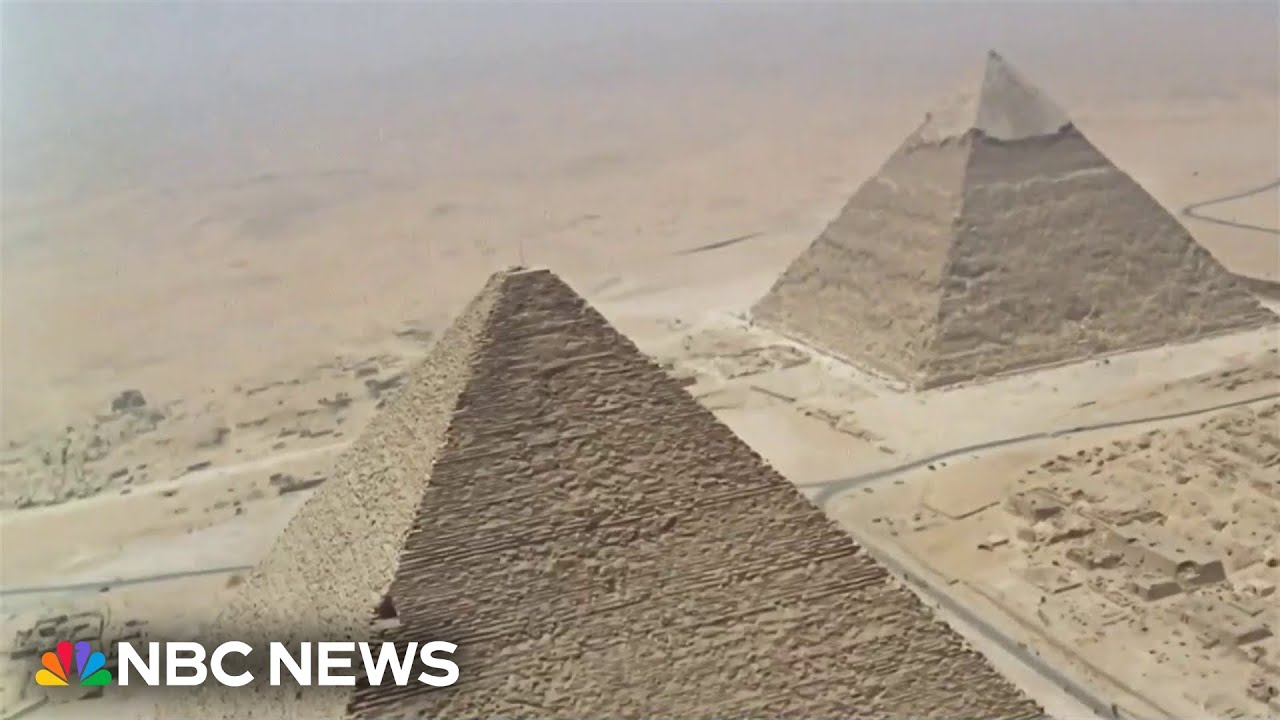
YouTube Video
Click to view this content.
Summary: > According to the video, a new study suggests that ancient Egyptians may have used hydraulic force to build the step pyramid of Pharaoh Djoser. The pyramid is the oldest of the seven monumental pyramids in Egypt and was the largest structure at the time, with stones weighing more than 600 pounds. Researchers believe that a nearby structure may have functioned as a dam, and that water could have flowed into shafts inside the pyramid, raising a float that carried the stones like a water elevator. However, some experts are skeptical of this theory, as there is no evidence that the Egyptians had the technology to use water pressure in this way. More research is needed to determine if this theory is correct.
- • 100%www.independent.co.uk ‘World’s oldest calendar’ found carved onto ancient monument
The timekeeping system was unearthed at the Gobekli Tepe site in Turkey.

- www.livescience.com Archaic human 'hobbits' were even shorter than we thought, 700,000-year-old teeth and bone reveal
A new analysis of teeth and a bone found on an Indonesian island reveal that "hobbits" were more than 2 inches shorter than we thought.

Early hominins known colloquially as "hobbits" may have been shorter than scientists thought, a new analysis of teeth and bones has revealed.
The 700,000-year-old fossilized remains belonged to Homo floresiensis, an extinct species of exceedingly small humans that once inhabited Flores, an island south of mainland Indonesia, according to a study published Tuesday (Aug. 6) in the journal Nature Communications.
The new research may shed light on when H. floresiensis first evolved its diminutive height.
"Acquiring a large body and large brain and becoming clever is not necessarily our destiny," lead author Yosuke Kaifu, a professor at the University Museum at the University of Tokyo, told Live Science in an email. "Depending on the natural environment, there were diverse ways of evolution not only for animals in general but also for humans."
- • 100%www.colorado.edu Uncovered Euripides fragments are ‘kind of a big deal’
CU Boulder Classics scholars identify previously unknown fragments of two lost tragedies by Greek tragedian Euripides.

Heyo!
I'm looking for some rock art. I've been familiarising myself bit by bit but I'd really appreciate being pointed to some sites by the following criteria (in order of importance):
-
the best-preserved rock art, a la Lascaux & such (and/or the most striking--which is not quite the same thing! emphasis on the former since the latter is more subjective :))
-
especially which depicts non-human life (other animals & so on) or part-humans (but the less anthropocentric the more it appeals to me)
-
and especially anything from the neolithic or (bonus points!!) before! Paleolithic is my main interest, I'm not really interested in anything after literacy :)
Thank you SO much!! Any advice on specific sites or where/how to search under this criteria super appreciated!!
-